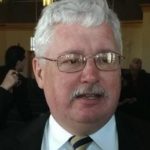Fostering a Culture of Innovation in Agriculture
Editor’s note: Contributing writer Michael Collins recently participated in a virtual conference on innovation. Below is a summary of Collins’ thoughts from this conference, most of which can be applied to establishing a culture of innovation in agriculture.
Innovations come from nascent, and identified, needs. Innovations are intrinsically lodged in the future; they do not currently exist except as holes in some future perceived capabilities. Today, innovations are defined by their technology and the buildup of technological capabilities over long, long periods of time. The identification of need, its structuring and contextualization, and the synthesis of solutions from the exploitation of technology form the foundations of our society and our culture; even, our entire existence and that which surrounds us.
This series of lecture notes will begin to expose the deep understandings about what this means. Towards the end of these learning notes we will delve into, and only touch on the issue of consciousness and the early explorations into this by persons like Terrence Deacon, David Bohm, and others. While this exploration into what seems like the mystical may seem unusual, it is without a doubt a unifying theory for that which surrounds, and includes, us.
As we explore each subject, we find we will wander into less traveled parallel universes, and in these universes we will find similar questions, and some answers. These answers are applicable to many questions; many questions and answers like those we have in our own universe. This will begin to reveal the power of the weak link, and the secret to establishing a culture of innovation.
We will also explore a little of the change management environment. Innovations are about change and strategy; the development of strategy, the preparation of the ecosystem, and the commercialization of the innovation. Peter Drucker has said, “Culture eats strategy for breakfast.” Any ag-tech company that disconnects the two is putting their success at risk. Preparation of the ecosystem for strategy and innovation is central to fostering and developing a culture in the ecosystem ready and able to develop, accept, and deploy it.
MORE BY MICHAEL R. COLLINS
Our technology is our economy. The subject of contemporary economic interest is the concept of innovation, and technology is the driving and even dominant determinant in innovation. Technology is dominant in our discussions of economics, business, health, or any field of endeavor such as agriculture, and it is the pervasive component in every life. Technology, which is at the core of innovation, is our society, our culture, our economy, and the core of change.
Many times innovation is represented as just another program du jour. We will put this program in place and suddenly we will be more innovative. Unfortunately, when we look at the details of the discussions about innovation, we often only see the program du jour, or we see project management, finance, or entrepreneurship. None of these addresses technology, i.e., the culture of technology; nor do they discuss where innovations come from. Realistically, none really helps us understand innovation: its dimensions, emergence, attributes, evolutionary paths, etc. None of these help us see the pervasive, embedded, and intangible tendrils that permeate our culture. There is a failure to see technology for what it is and how it must be embraced, revealed, and embedded in our systems.
The following outline and the detailed preparations developed in each area are about technology; where it comes from, how it develops, how it matures, how it evolves in a market, its limits, and how it commercializes. We must understand technology to understand innovation and what we must do to prepare, embrace, manage, and deploy innovation. A discussion of innovation is and should be a continuum that traces the impact of technology from end to end. This outline traces these issues about technology across a spectrum of subject areas and details how innovations emerge from technology, and vice versa.
The outline launches with the continuing evolution of the human need and technology as its centerpiece. This outline expands upon some of the more important attributes of innovation, and limits in technology. It explores some of the universal and immutable truths in the ecosystem and expands these as subjects of investigation in the grand diffusion of an innovation, even a domain, and, ultimately, into a society and its culture.
The following outline revolves around and builds upon the facts and concepts presented in the first sections. Language is integral to this presentation, and common words will now take on new meaning rich with a breadth of context. In fact, we will spend some time exploring the ambiguity and impact of words and models, and the form of these. We will also see early on in the origins of innovation and the synthesis of systems how the processes of need identification can develop, and may develop, mostly in our subconscious minds as we dream, think, and ponder in our quiet time.
The emergent outline for this sequence is:
- Introduction: Technology and the Commercialization of Innovation
- Operational/ Functional View of Need
- Origin of Innovation
- Nature of Technology
- Synthesis of Systems
- Elements and Models of the Synthesis Process
- Agility and Innovation
- Networks and Hierarchies; and the Power of Weak Links
- Requirements, Specification, and Use Case
- The Accumulation of Technical Debt (Software and Systems)
- Analytics and the Master Algorithm
- Automation and Autonomy
- Domains and Enterprise Architecture
- Diffusion of Domains
- System Scale: Economies and Diseconomies of Scale
- Demographics and Markets
- Saeculums and Turnings
- Change Management and Cognitive Engineering
- Emergence
First, and most important, is the recognition that before the innovation there is a need, and it is ambiguous, unformed, and largely unspecified. Innovations emerge from the development and refinement of this need and then the exploitation of the science, the phenomena, to solve this need. Exploitation of the science and its phenomena requires a deep understanding of the principles of the phenomena and the discovery of the methods for extracting the actions from these phenomena; the technology.
Science, and the expansively developed phenomena of that science and the supporting principles and methods, is the basis for an explosion of more and more technologies, and, ultimately, their aggregation into existing or new domains. Domains establish the trade spaces of science from which the combinations, additions, and modifications of these technologies are used to create innovations. Our economy is the result of the combinations, additions, and modifications of these technologies that exploit these phenomena, and our innovations are substitutes/replacement for existing technologies and refinements in the existing systems.
Our economy, our culture, our society is the technology it employs and supports. The growth in our economy is derived from continued investment. The discussions about investment have placed innovation as the hallmark of that growth, and, because of this, it has been an area of study and research. Understanding the origins of innovation and the philosophy of technology enables us to foresee and manage the changes in our economy. Our understanding enables us to put in place a culture that promotes, supports, and enhances innovation. It enables the efforts we employ to continuously insert newer technologies in our economy and to change the society to which it gives rise.










